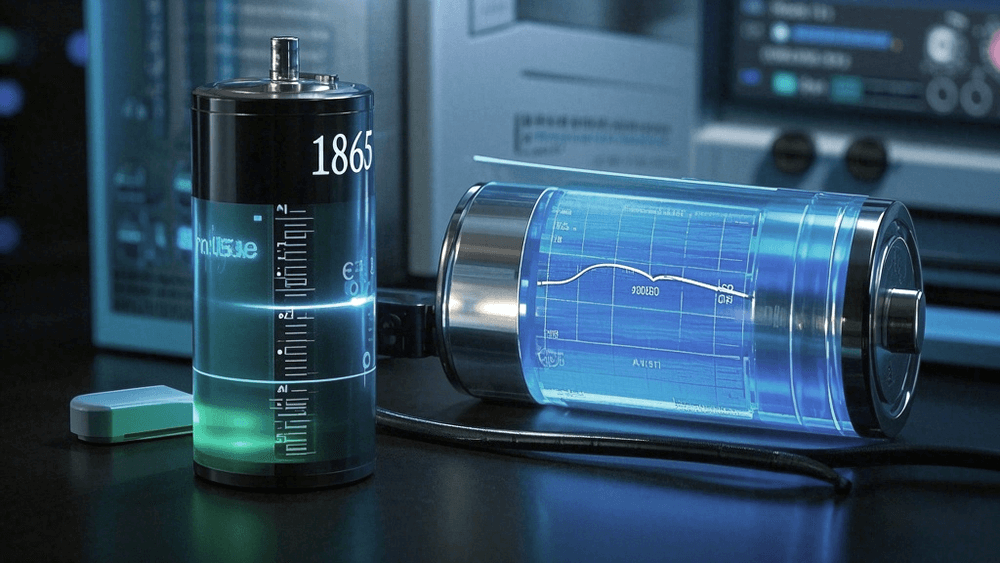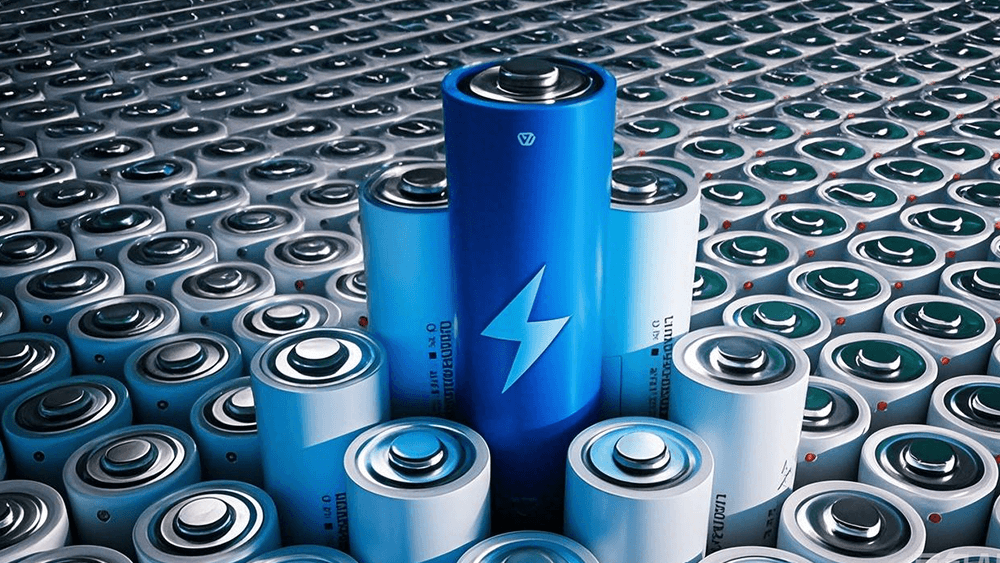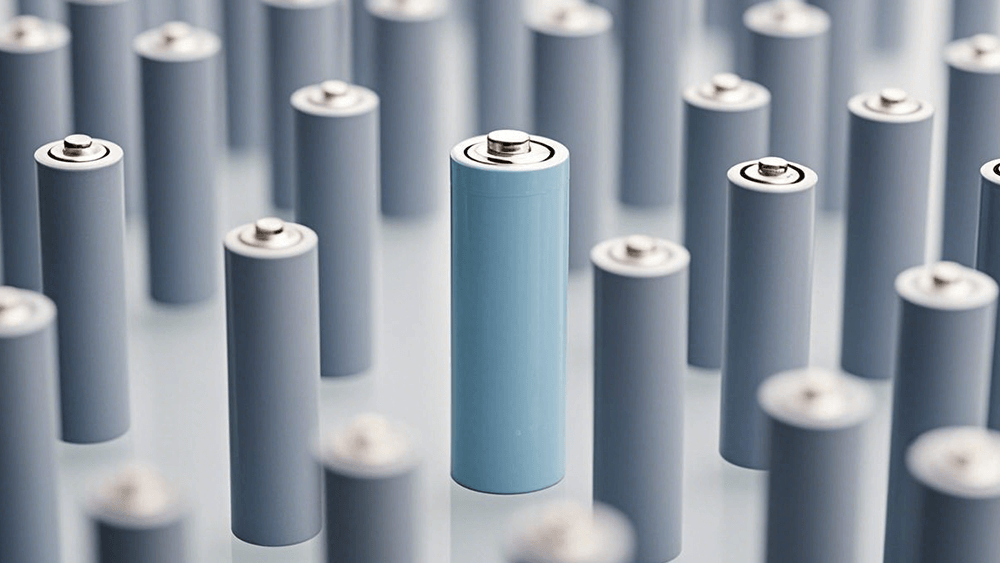Contents

You rely on 18650 batteries for their versatility and performance in industrial and commercial applications. These cylindrical cells offer a typical 18650 capacity range of 1000mAh to 3500mAh, with some reaching 4000mAh. Medium-capacity batteries (2000mAh to 3000mAh) dominate the market, powering laptops and tools, while high-capacity cells drive electric vehicles and energy storage systems.
Key Takeaways
- 18650 batteries have different capacities, usually from 1000mAh to 3500mAh. Pick the right one for your device to work well.
- Temperature changes affect how batteries work. Hot weather can harm capacity, and cold weather can lower energy flow. Use special purpose batteries for tough conditions if needed.
- Choosing a trusted maker is very important. Brands like Panasonic,Samsung SDI and Large Power make safe and good-quality batteries.
Part 1: Understanding 18650 Capacity and Its Measurement
1.1 What Is 18650 Battery?
An 18650 battery is a standardized cylindrical lithium-ion (Li-ion) rechargeable battery, widely utilized in consumer electronics, power tools, electric vehicles, and energy storage systems. Its name derives from its physical dimensions: 18mm in diameter, 65mm in length, and the “0” denoting its cylindrical form factor. These batteries typically operate with LCO (3.7V-3.8V), NCM (3.5V–3.6V), LMO (3.6V) or LiFePO4 (3.2V) for enhanced safety and longevity, balancing high energy density with rechargeability to power high-demand devices efficiently.
1.2 What Is 18650 Battery Capacity?
18650 battery capacity refers to the amount of electric charge the battery can store and deliver over time. It is measured in milliamp-hours (mAh) or ampere-hours (Ah). For example, a 2500mAh battery can theoretically provide 2500mA of current for one hour or 1250mA for two hours. This metric is critical for determining the runtime and energy density of the battery, especially in industrial applications like power tools and energy storage systems.
The typical capacity range for 18650 batteries spans from 1200mAh to 3500mAh, with high-capacity batteries exceeding this range. Lithium-ion batteries, such as those using NCM or LFP chemistries, dominate the market due to their superior energy density and performance.
1.3 How Do You Measure And Calculate 18650 Capacity?
Measuring 18650 capacity involves precise tools and techniques. Start by fully charging the battery to its nominal voltage, typically 4.2V for lithium-ion cells. Then, use a battery capacity tester or electronic load to discharge the battery at a controlled rate. During the discharge process, monitor the voltage and current. Finally, calculate the capacity using the formula:Capacity (mAh) = Current (mA) × Time (hours)
Reliable tools for this process include:
- Digital Multimeter: Measures voltage and current.
- Battery Capacity Tester: Logs total output during discharge.
- Resistor Load or Electronic Load: Ensures precise current draw.
These methods ensure accurate capacity measurements, which are essential for optimizing battery pack performance.
1.4 Comparing Capacities Across Different Chemistries (e.g., LCO,NCM, LFP)
Different chemistries influence the capacity and voltage of 18650 batteries. For instance, lithium cobalt oxide (LCO) batteries offer high energy density but shorter life cycles, making them suitable for consumer electronics. Nickel cobalt manganese (NCM) batteries balance capacity, safety, and cost, making them ideal for electric vehicles. Lithium iron phosphate (LFP) batteries, with lower energy density, excel in safety and long life, often used in industrial battery packs.
| Battery Type | Nominal Voltage | Energy Density |
|---|---|---|
| Lithium cobalt oxide (LCO) | 3.6V or 3.7V | 180~200Wh/kg |
| Nickel cobalt manganese (NCM) | 3.5V or 3.6V | 160~270Wh/kg |
| Lithium Iron Phosphate (LiFePO4) | 3.2V | ~160Wh/kg |
Understanding these differences helps you select the right battery for your application, balancing capacity, safety, and cost.
Part 2: Factors Influencing 18650 Battery Capacity

2.1 The Impact of Temperature on 18650 Capacity (Normal vs. Low-Temperature Performance)
Temperature significantly affects the performance and capacity of 18650 batteries. High temperatures accelerate chemical reactions within the cell, leading to faster degradation. For instance:
- The maximum charge storage degradation rate increases from 4.22% to 13.24% as the operating temperature rises from 25°C to 55°C after 260 cycles.
- The Warburg element resistance shows a dramatic increase, from 49.40% to 584.07%, under the same conditions.
- Cell impedance degradation rises from 33.64% to 93.29%, further impacting performance.
Low temperatures also reduce capacity by slowing down lithium-ion movement, which limits energy transfer. For example, low-temperature 18650 batteries, such as those from Large Power, Panasonic or CATL, are specifically designed to maintain capacity and power output in extreme conditions. You can explore more about low-temperature battery performance here.
2.2 Aging and Usage Patterns: How They Affect Capacity Over Time
Aging and usage patterns directly influence the lifespan and capacity of 18650 batteries. Factors such as temperature, state of charge (SoC), and charging rates play critical roles:
| Factor | Impact on Aging Mechanism |
|---|---|
| Temperature | Higher temperatures accelerate capacity fade. |
| State of Charge (SoC) | Affects solid electrolyte interphase (SEI) growth and lithium plating. |
| Charging Rate | Faster charging can lead to lithium plating, reducing capacity. |
| Calendar Aging | Capacity loss occurs even when the battery is not in use. |
| Cyclic Aging | The first 200 cycles show the highest capacity loss, especially at low temperatures and high SoC. |
For example, cyclic aging studies reveal that capacity degradation is more pronounced in high-capacity 18650 batteries during fast charging at cold temperatures. This highlights the importance of optimizing charging protocols to extend runtime and battery life.
2.3 Chemistry and Design: Why Capacity Varies Among Manufacturers
The chemistry and design of 18650 batteries determine their capacity, energy density, and performance. Manufacturers like Samsung SDI and Large Power use different chemistries to meet specific application needs.
| Dataset Name | Description | Chemistries Tested |
|---|---|---|
| Short-Term Cycling Performance | Analyzed performance of 24 cells across four chemistries under varying conditions. | LCO, LFP, NCA, NMC |
| Long-Term Degradation | Evaluated long-term effects of cycling on 86 cells with different chemistries. | NCA, NMC, LFP |
| Sandia National Laboratories Data | Contains cycling data for commercial 18650 cells, focusing on performance comparison of chemistries. | Various |
For instance, lithium cobalt oxide (LCO) batteries offer high energy density but shorter lifespans, making them ideal for consumer electronics. Nickel cobalt aluminum (NCA) and nickel cobalt manganese (NCM) chemistries balance capacity and safety, making them suitable for industrial applications. Lithium iron phosphate (LFP) batteries prioritize safety and long life, often used in energy storage systems. These variations allow you to select the highest capacity 18650 battery tailored to your specific requirements.

Part 3: Trade-Offs and Applications of High-Capacity 18650 Batteries
3.1 The Cost and Lifespan Trade-Offs of High-Capacity Batteries
High-capacity 18650 batteries offer extended runtime and higher energy density, making them ideal for demanding applications. However, these benefits come with trade-offs. The price of high-capacity batteries is significantly higher due to advanced materials and manufacturing processes. For example, lithium cobalt oxide (LCO) cells, known for their high energy density, are more expensive than lithium iron phosphate (LFP) alternatives.
Lifespan is another critical factor. High-capacity batteries often experience faster degradation due to increased stress on the electrodes during charging and discharging cycles. For instance, a 3500mAh cell may lose capacity more quickly than a 2500mAh cell under identical conditions. Businesses must weigh these trade-offs when choosing the right capacity for their power requirements.
3.2 Discharge Rates and Their Effect on High-Capacity 18650 Performance
Discharge rates significantly impact the performance of high-capacity 18650 batteries. At standard discharge rates, these batteries deliver optimal capacity and maintain voltage stability. However, high-drain applications reduce deliverable capacity and increase voltage sag.
| Discharge Rate | Capacity (mAh) | Voltage Stability | Usable Energy |
|---|---|---|---|
| Standard Rate | 3000 | Moderate | High |
| High-Drain | 2500 | Stable | Higher |
High-drain cells, such as those used in power tools, are designed to handle continuous currents of 20-30A while maintaining stable voltage. This ensures reliable performance even under demanding conditions. When selecting batteries, consider discharge characteristics to match your system’s power requirements effectively.
3.3 Applications of High-Capacity 18650 Batteries in Industrial Battery Packs
High-capacity 18650 batteries are widely used in industrial applications due to their superior energy density and performance. In electric bicycles, these batteries deliver 30-50A continuous current, ensuring consistent power output under varying loads. Power tools benefit from their robust design, which includes thermal management systems to handle high current demands.
Drones represent another key application. High-capacity 18650 batteries optimize energy density and discharge capability, directly influencing flight time and reliability. Manufacturers like Panasonic and Samsung SDI have developed specialized cells for these applications, ensuring safety and efficiency. By understanding the characteristics and applications of these batteries, you can make informed decisions for your industrial needs.

Part 4: Choosing the Right 18650 Battery for Your Business
4.1 Matching 18650 Capacity to Device and System Requirements
Selecting the right 18650 battery starts with understanding your device’s power requirements. High-drain devices, such as power tools or electric vehicles, demand high capacity batteries (3000mAh to 3500mAh) to ensure extended runtime and reliable performance. In contrast, low-drain devices, like flashlights or small electronics, can operate efficiently with medium or low capacity batteries (1000mAh to 3000mAh).
To avoid overheating and ensure safety, focus on the Continuous Discharge Rating (CDR). This metric indicates the maximum current the battery can deliver without compromising performance. Additionally, consider the physical size and weight of the battery to ensure compatibility with your system. Balancing these factors helps you optimize battery capacity for your specific application.
4.2 Evaluating Size, Weight, and Budget Constraints
High capacity 18650 batteries provide longer runtimes but are often larger, heavier, and more expensive. For portable devices, these characteristics may pose challenges. On the other hand, low capacity batteries are smaller, lighter, and more affordable, making them suitable for applications where size and weight are critical.
Budget constraints also play a significant role in battery selection. While high capacity batteries offer superior energy density and performance, their price can exceed the budget for certain projects. Evaluating these trade-offs ensures you choose a battery that meets your power requirements without exceeding financial limits.
4.3 Selecting Reliable Manufacturers for Industrial Applications (e.g., Panasonic, Samsung SDI, Large Power)
Partnering with reputable manufacturers ensures you receive high-quality 18650 batteries with consistent performance. Companies like Panasonic and Samsung SDI are renowned for their rigorous testing and superior manufacturing standards. Their lithium-ion cells often exceed published ratings, providing reliability for industrial applications.
Large Power also stand out for their innovative designs and focus on safety. Large Power offers a range of 18650 batteries tailored to meet diverse industrial needs, from medical devices to portable devices. By choosing trusted suppliers, you can ensure the longevity and efficiency of your battery packs.
18650 batteries provide a versatile solution for industrial and commercial applications due to their wide capacity range. Factors like temperature, aging, and chemistry significantly impact their performance. For instance, high temperatures can cause binder layer formation on electrodes, while aging leads to SEI film growth, reducing capacity. Chemistry variations, such as lithium cobalt oxide or lithium iron phosphate, influence safety, runtime, and power output.
High-capacity 18650 batteries offer extended runtime but come with trade-offs like higher price and faster degradation. Businesses must evaluate power requirements, charging protocols, and budget constraints to select the most suitable battery. Partnering with reliable manufacturers ensures optimal performance and safety for your systems.
FAQ
1. What is the lifespan of a typical 18650 battery?
The lifespan of a 18650 battery depends on its chemistry and usage. On average, it lasts 300-2,000 cycles. Proper charging and storage extend its life.
2. How does low temperature affect 18650 battery performance?
Low temperatures reduce the battery’s capacity and discharge rate. Specialized low-temperature 18650 batteries, like those from Large Power, maintain performance in extreme conditions. Learn more here.
3. Can you mix different 18650 batteries in a pack?
Mixing batteries with varying capacities or chemistries in a pack is not recommended. It causes uneven discharge, reduces efficiency, and may damage the pack.





